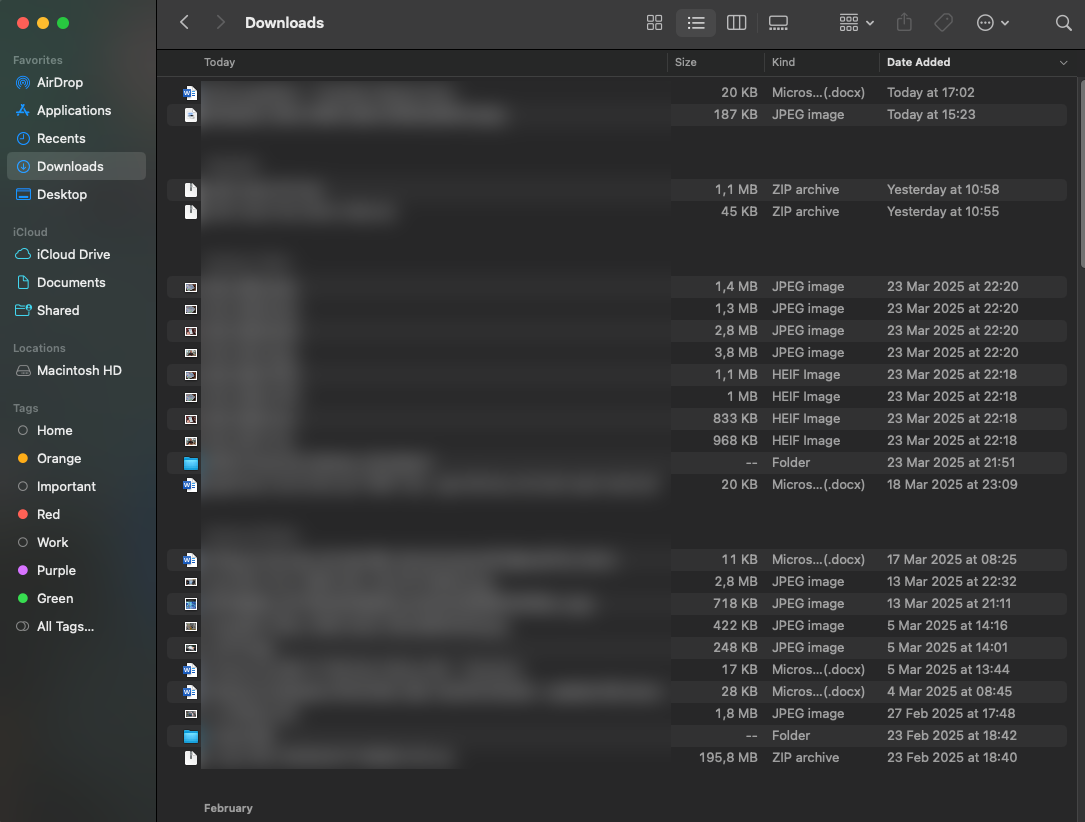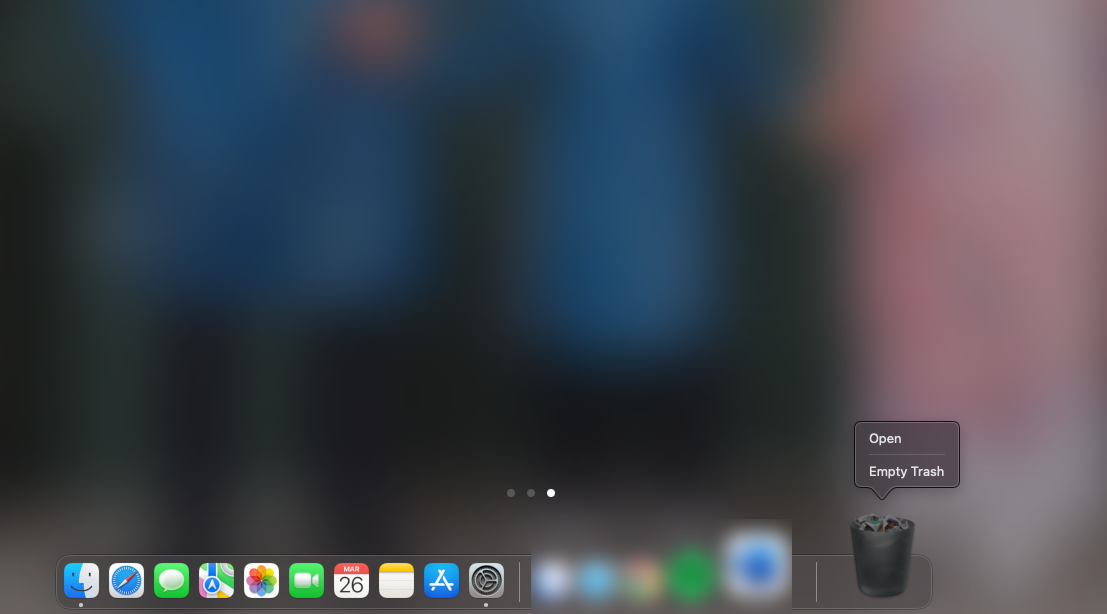Below are simple but effective methods to help users quickly clean up occupied storage space to free up space for Mac hard drives.
Clean up "Downloads" and "Home" folders
The Downloads folder is often a place where unused files accumulate, including application installers, old documents, archives, and other unnecessary files. Users can access Finder, select Downloads from the Dock, and sort files by size to easily identify and delete data that is taking up space.

The Downloads folder often contains many unused files, wasting storage space on the hard drive.
The Desktop folder, where screenshots are saved by default, should also be reviewed and cleaned up periodically. Setting these two folders to automatically delete after a period of time can help keep things neat and save storage space, while reducing the amount of manual work that users have to do.
Remove unused applications
Installing applications on Mac is so convenient that many users install software on their computers without ever touching it. In addition, there are many software that take up a lot of space on the hard drive such as finished games or programs that have expired for free (don't want to pay to use them anymore) so they are removed from the computer.
In Apple (apple logo in the top left corner) > System Settings > General > Storage > Applications , you can sort apps by last used time to identify "forgotten" programs.
To completely remove the app, users should use software like AppCleaner or PearCleaner to clean up all the attached data, including cache and related system files. Dragging and dropping the app icon to the Trash does not completely solve the problem and still leaves behind junk files that are difficult to track down later.
Find and delete large files
Files such as videos , RAW images or virtual disks (ISO) can take up a lot of space but are easily forgotten in subfolders on the computer. There are currently some tools on the Internet such as GrandPerspective or OmniDiskSweeper that help users visualize disk capacity, helping to detect and process large folders and data quickly.
GrandPerspective displays a drive map as colored blocks, while OmniDiskSweeper lists folders in order of size. Both are free and easy to use.

After cleaning up data that is no longer needed, users should "empty the trash" so that all files are completely deleted from the hard drive.
Delete outdated iOS backups
Most Mac users are using iPhones because of the synced ecosystem. For this reason, iOS backups are often present in the computer's storage. In case you have switched to iCloud backups, local backups on your Mac are often no longer valid.
Users can access the path on the device: System Settings > General > Storage > iOS Files to check and Delete old backups. This helps free up a large amount of space, especially if the backups are no longer related to the current device.
Clear data from Messages app
The Messages app syncs data across Apple devices, but many attachments may still be stored locally on your Mac's hard drive. Go to System Settings > General > Storage > Messages to check for local data and delete it. These files do not affect data stored in iCloud, so you can process them without worrying about losing important information.
Empty the Trash to reclaim free space
Deleted data will not be completely released until the user performs an "Empty" operation in the Trash. The option to automatically empty the Trash after 30 days can also be set in Finder > Settings > Advanced . Alternatively, the Option + Command + Delete key combination can be used to delete immediately without going through the Trash.
Properly managing your storage space not only optimizes your machine's performance, but also extends its lifespan. Performing these tasks regularly will help keep your system stable and ready for any necessary tasks.
Source: https://thanhnien.vn/6-cach-giai-phong-dung-luong-o-cung-tren-mac-18525032622393147.htm



































































































Comment (0)